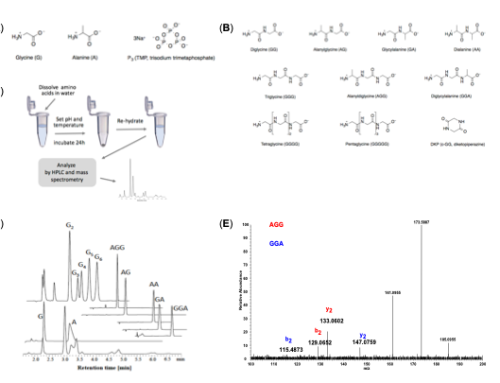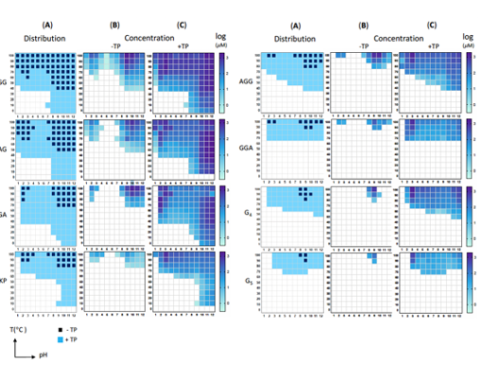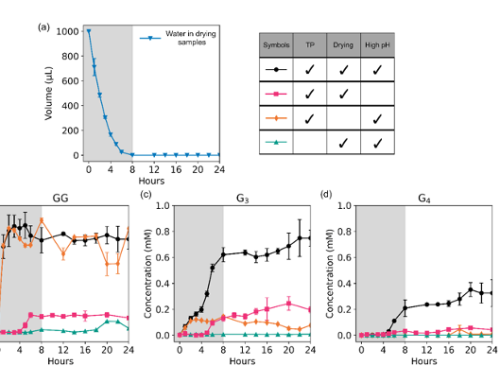Simple drying can drive a 2-step reaction mechanism

In the first step, at elevated pH and in the presence of trimetaphosphate (TP), glycine is activated at its N-terminus, and the activated glycine then reacts with glycine to form diglycine (GG), while generating protons that drive the pH down, as in Mechanism 1 (a). In the second step, at lower pH, diglycine or longer peptides of glycine can become activated at their O-terminus and react with glycine or other peptides, to grow further in length. Although these mechanisms have long been known, we found how drying enables them to work in tandem to drive formation of longer peptides. For further details, see Boigenzahn and Yin, 2022.




